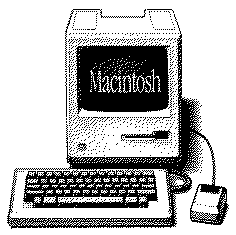|
|
|
|
|
|
|
68k Macintosh Locator |
|
|
| |

|
Macintosh Computer
|
Macintosh Periphery
|
Apple II Computer
|
|
|
|
|
|
|
| |
|
 |
|
|
|
 |
 |
|
 |
|
|
· myoldmac.net · Vintage Apple Macintosh Computer · |
|
|
 |
|
Apple Macintosh SE/30
The Macintosh SE/30 is a personal computer that was designed, manufactured and sold by Apple Computer, Inc. from 1989 until 1991. It was the fastest and most expandable of the original black-and-white compact Macintosh series.
The SE/30 is essentially a Macintosh IIx in the same case as the Macintosh SE, with a black-and-white monitor and a single PDS slot (rather than the NuBus slots of the IIx) which supported third-party accelerators, network cards, or a display adapter. Although officially only able to support 32 MB, the SE/30 could expand up to 128 MB of RAM (a ludicrous amount of RAM at the time), and included a 40 or 80 MB hard drive. It was also the first compact Mac to include a 1.44 MB high density floppy disk drive as standard (late versions of the SE had one, but earlier versions did not).
|
| In keeping with Apple's practice from the Apple II+ until the Power Macintosh G3 was announced, a logic board upgrade was available to convert a regular SE to a SE/30. The SE would then have exactly the same specs as an SE/30, with the difference only in the floppy drive if the SE had a 800k drive. The set included a new front bezel to replace the original SE bezel with that of an SE/30.
In the naming scheme used at that time, Apple typically indicated the presence of a 68030 processor by adding the letter "x" to a model's name, but when the Macintosh SE was updated to the 68030, this posed an awkward problem, as Apple was not willing to name their new computer the "Macintosh SEx". Thus, "SE/30" was the name chosen. Internally, code names such as Green Jade, Fafnir, and Roadrunner were used.
Related Links : wikipedia.org - lowendmac.com |

 |
 |
 |
 |
 |
|
|
|
 |
|
|

![]()